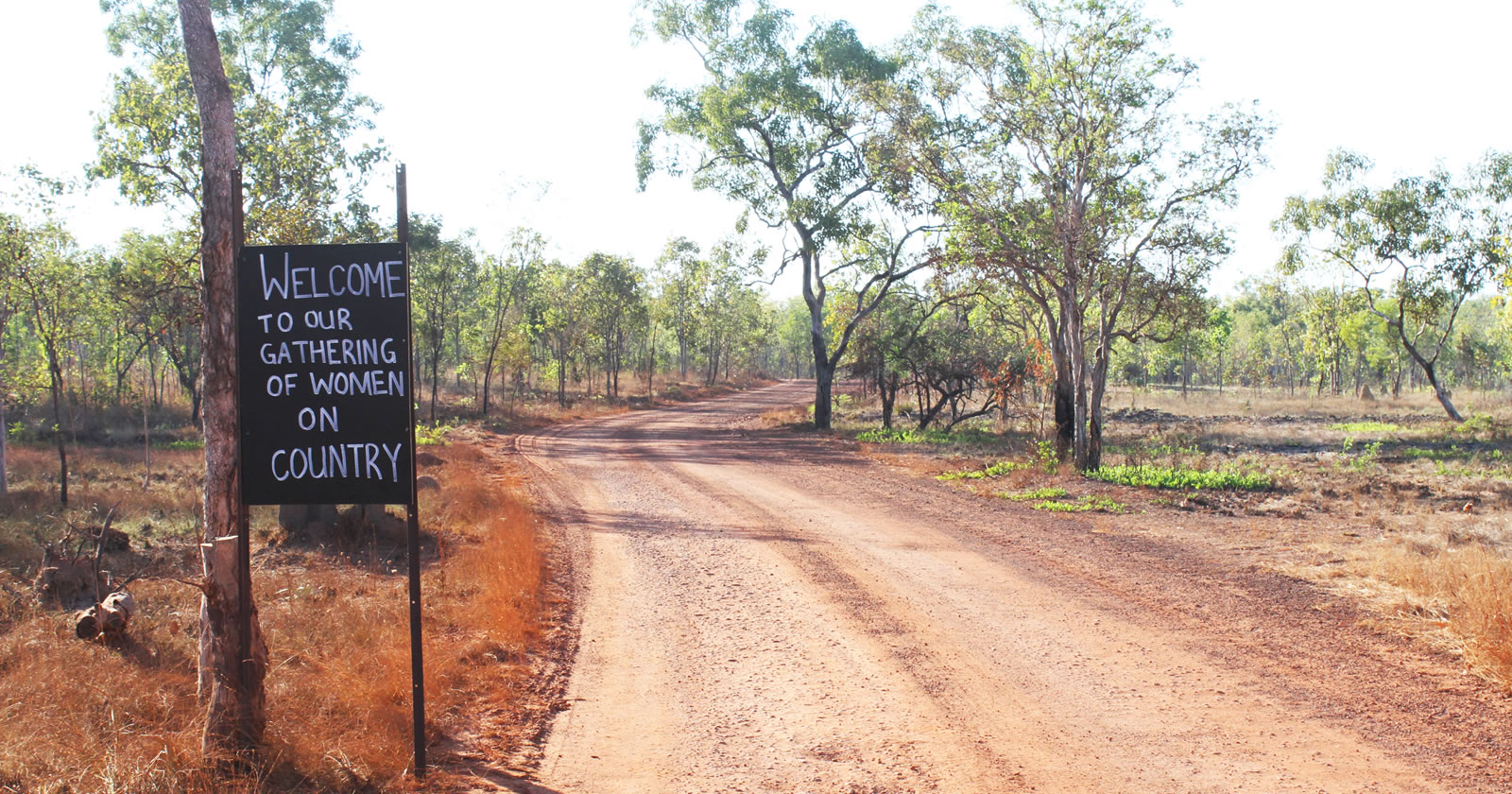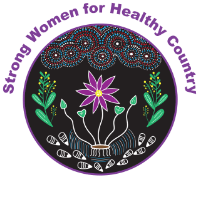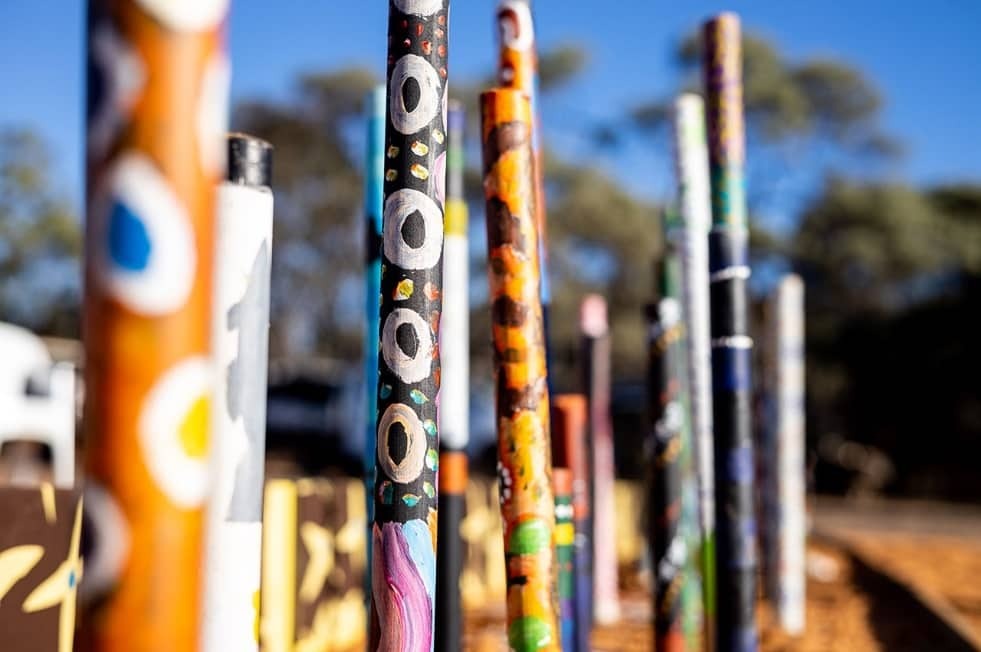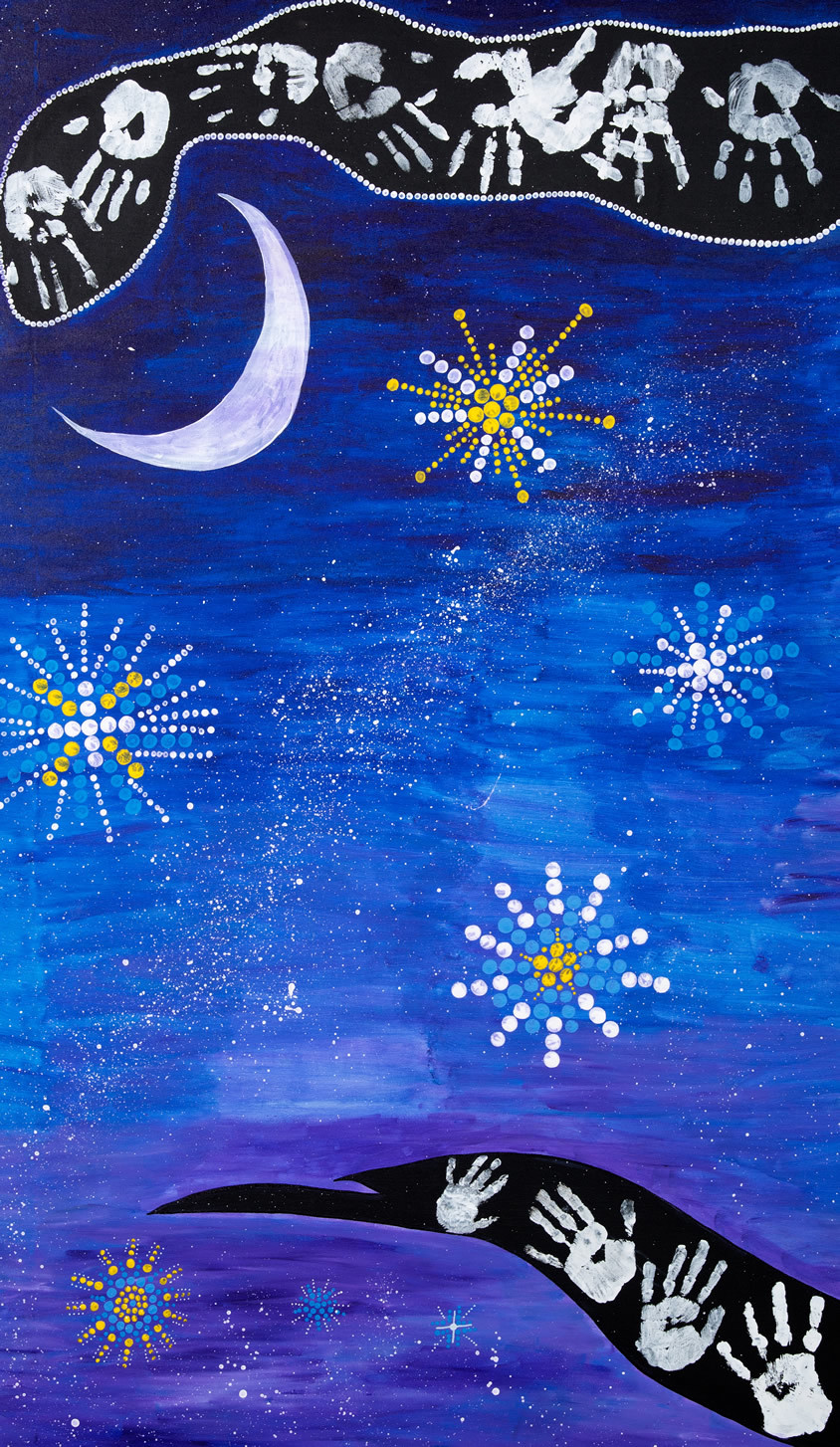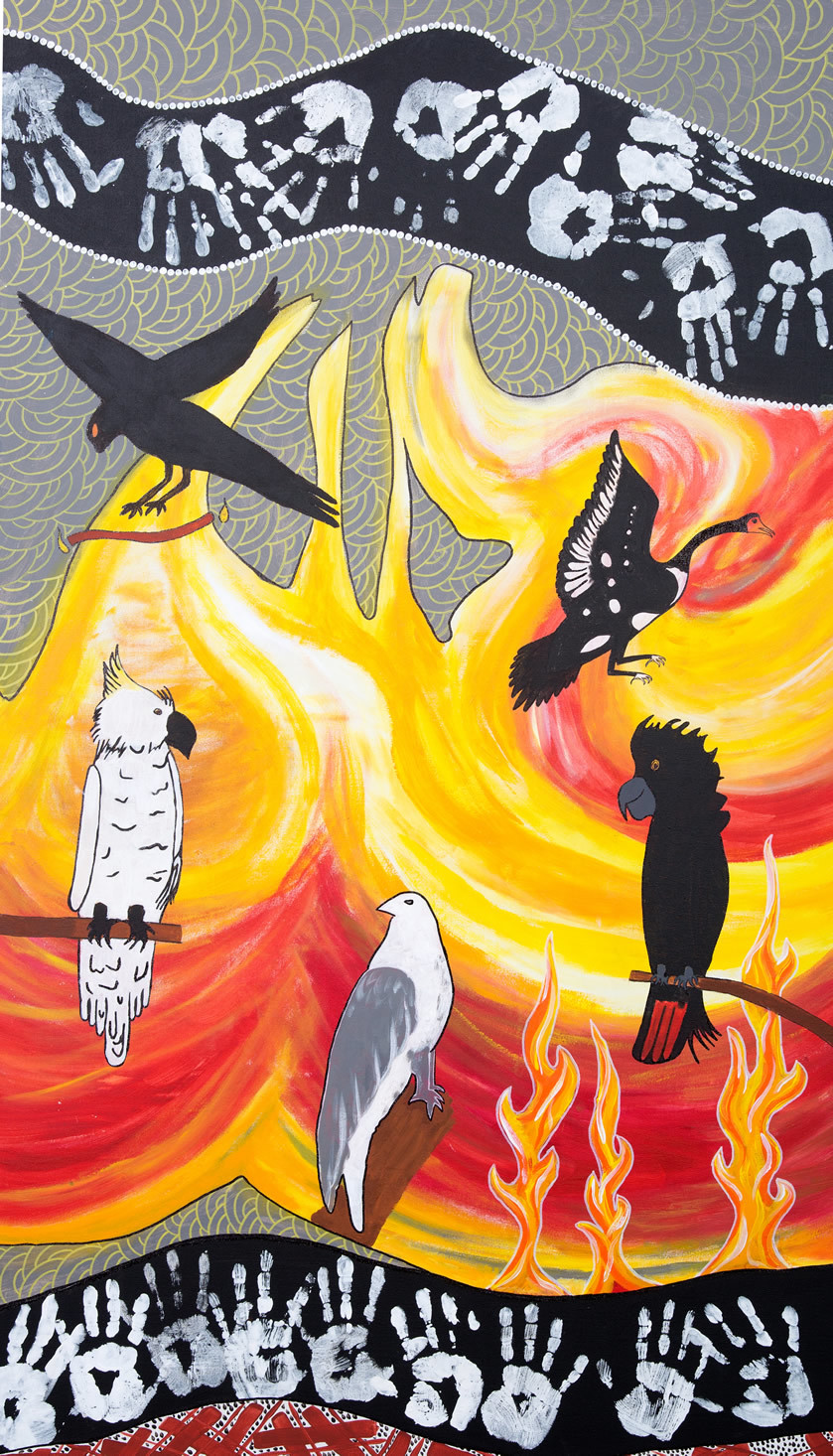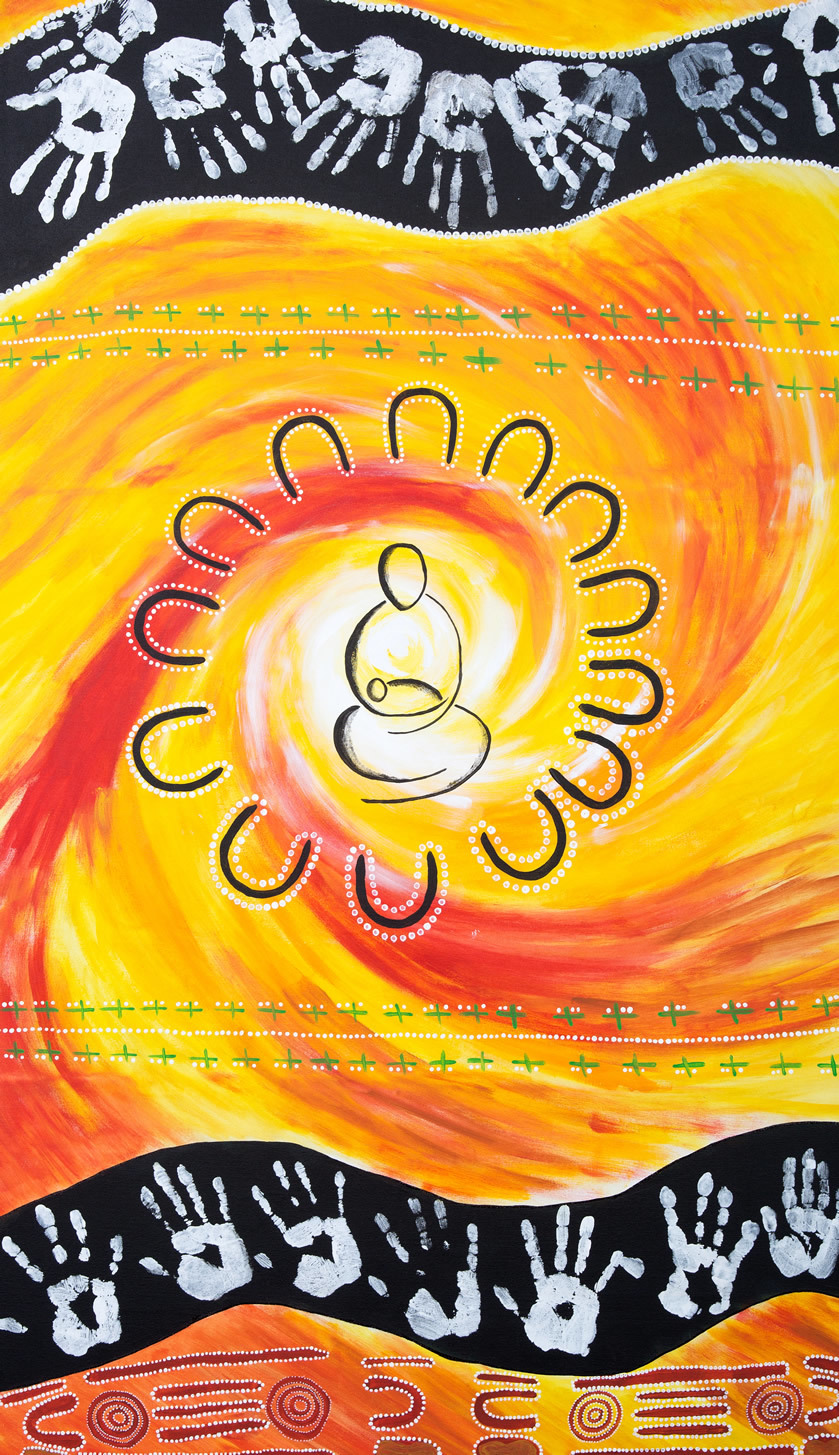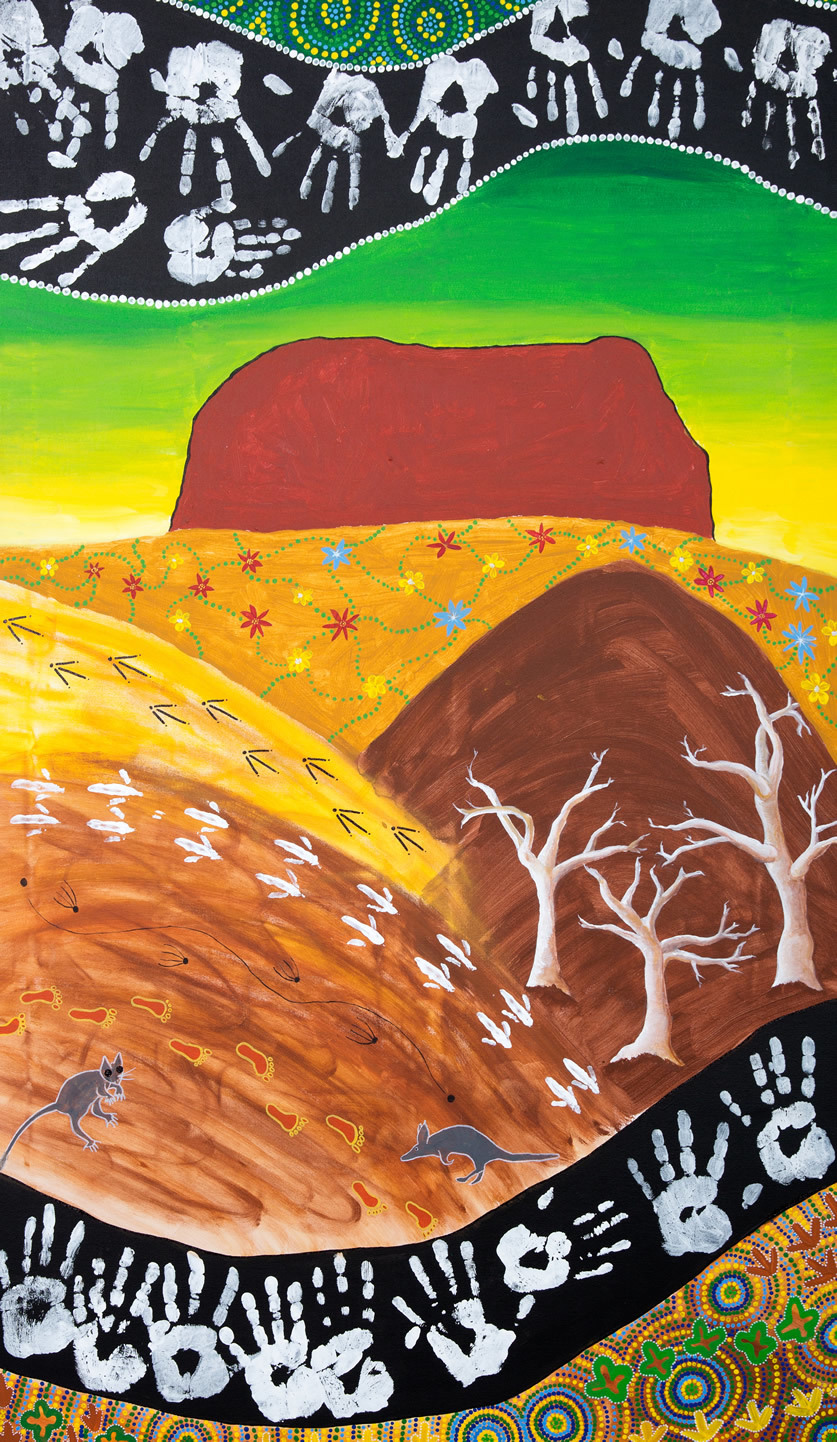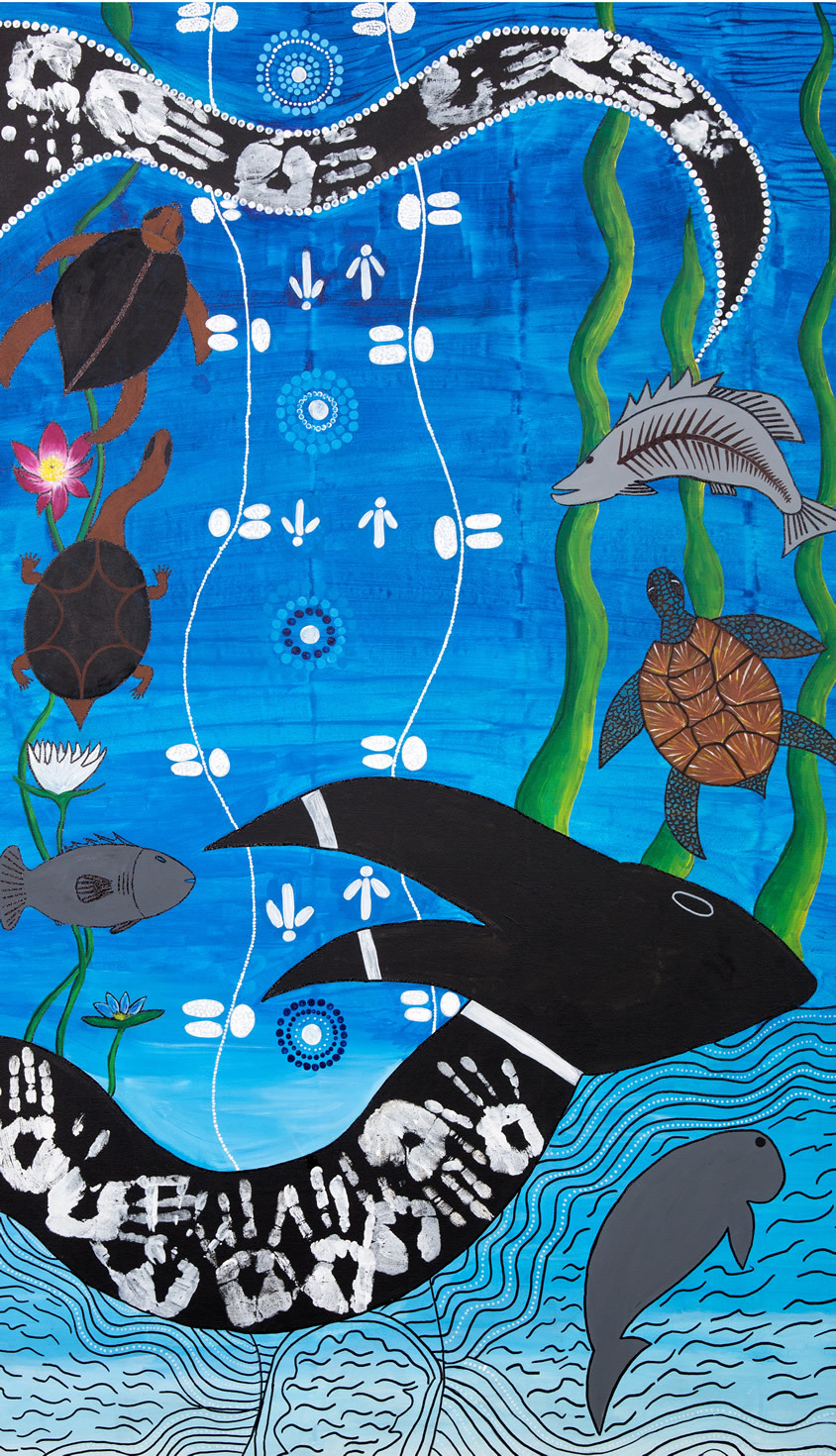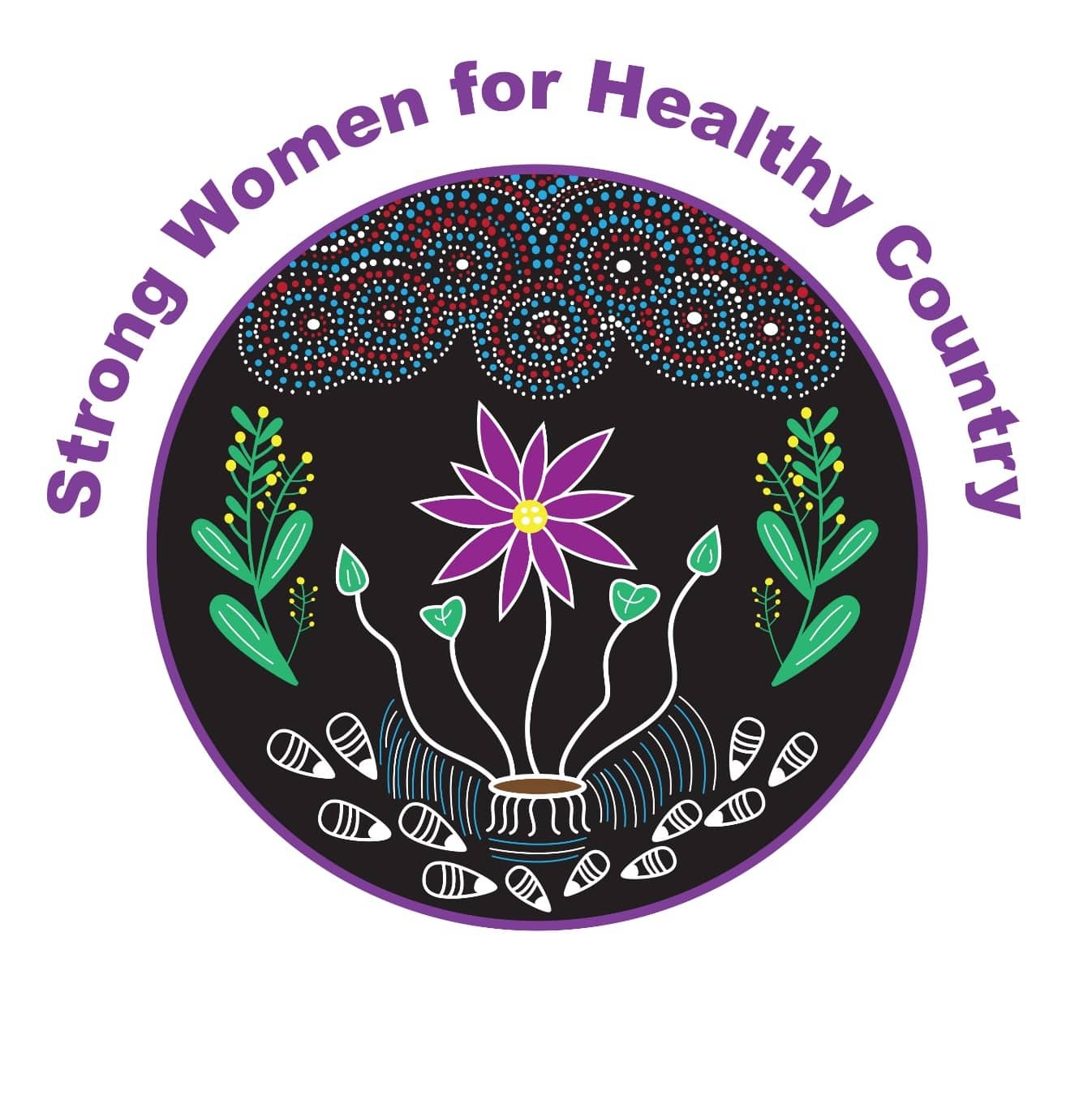‘Gundung’
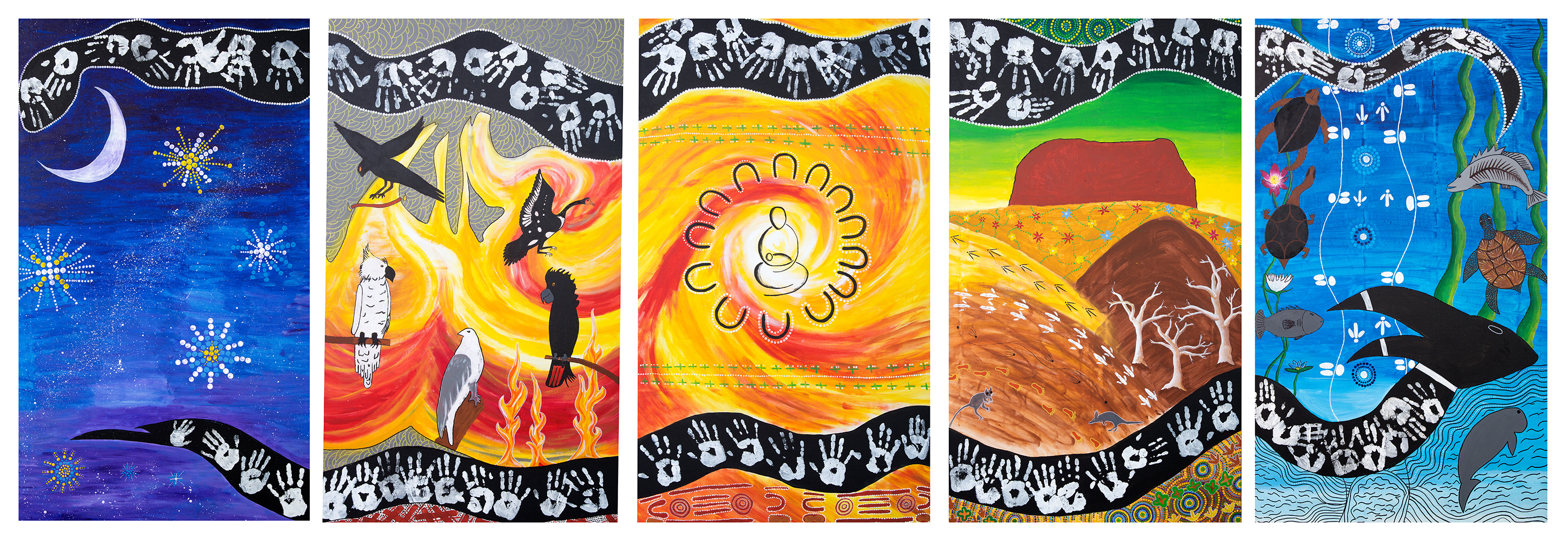
‘Gundung’ is the name of the mural that was created at the forum and is a collective effort, built around the central theme of ‘Strong Women for Healthy Country’.
The mural consists of a series of five panels on stretched canvas. Each panel represents, an element symbolic to women - Night, Fire, Sun, Earth, Water. The panels are tied together by the feminine and masculine duality of the Rainbow Serpent.
Artists, Shantelle Miller and Karla McGrady, worked with community members and project staff to formulate a design based on the theme of the conference ‘Strong Women for Healthy Country’.
The process of creating the mural began with Mimal community members who formulated a design based on the theme of the conference ‘Strong Women for Healthy Country’ prior to the forum.
Throughout the forum all participants had the opportunity to contribute to each piece and to the design and development process.
The finished mural is a visual representation of a powerful and symbolic moment for women in the region; the coming together of over 140 Indigenous elders and local women working for healthy country and their non-Indigenous allies all unifying with a shared vision – to strengthen the voice, role and support structures for women working for healthy country in the NT.
This symbolic piece of art represents the importance of shared knowledge, deep cultural connections to country and the desire to care for country with its value to us and each other.
The mural is an example of one medium of traditional storytelling. Within its layers, sacred knowledge is being passed down from generation to generation. This mural is a symbol to be passed down to future generations.
Gorl Gorlhk - Night
Night
Gundung panel 1 - Night
The moon tells us the time and month.
The stars are used to navigate - North, East, South and West.
The night also tells us when it is time to sleep.
At new crest moon, fire is thrown towards the moon, to give us plentiful food like fish and turtle.
The seven sisters is in the north and signifies sisterhood, women connecting and keeping strong in a group.
Milky Way, Buhwah, is the river up in the sky that tells us when it is winter (cold weather), it also tells us about our spirit rising up into the stars when we have passed / pass away.
Ngurra, Mimal - Fire
Fire
Gundung panel 2 - Fire
Fire is the main source of cooking food and keeping warm when it is cold.
Fire is used in many ways.
Fire is used to burn old groth to make way for new growth.
The brown falcon we call Kgarrganj, carries a fire stick that has flame, when the fire stick drops the fire spreads everywhere.
The smoke from the fire can be seen by the two cockatoos, which then start to give warning signs by their calling to signal danger.
Fire and smoke is also used to send signal to other clans and tribes.
The magpie geese are a staple food source and they are cooked on the fire.
The white sea eagle we call Mahgagah has a different connection to different parts of people from the Northern Territory.
Here in Bigetti the Mahgagah is a sacred totem for the Murray family.
Muta - Sun
Sun
Gundung panel 3 - Sun
The sun is the ruler of the day.
When the sun rises it tells us it is time to wake up from sleep.
Women get up to prepare food for children and family.
Women during the day go out hunting for small game, collecting yams, sugar bag, fish, berries, roots, tubers and shellfish.
They carry it with the Coolaman. Some women hunt for goanna, grubs and turtle.
Elderly women gather to support young mothers to help them raise small babies. This nurtures the baby to become healthy and strong.
This painting depicts the women of the sun.
Godgork - Earth
Earth
Gundung panel 4 - Earth
The earth is our mother (Mother Earth).
It has the source of giving life to plants, trees and animals.
In this painting there are prints of the emu, kangaroo, goanna and people.
When people are out hunting, they follow the tracks (prints) of different animals to sources of collected water and water holes.
The white gum tree is a source of witchetty grubs and sugar bag (bush honey).
When the first rain falls in Central Australia this creates the blooming season for desert flowers.
Uluru, Ayers Rock, is sacred to Indigenous people in Central Australia.
The intricate dot painting patterns depicts tracks of the emu and the desert kangaroo.
Dularh / Djulah / Julah / Wah - Water
Water
Gundung panel 5 - Water
Water is the main source of all life.
Water is used in many different ways.
Water is used to drink, bathe and cleanse, for cooking and for watering plants.
Animals, plants and us as humans rely on water to keep us alive.
There are two types of water, freshwater and saltwater.
In the saltwater we painted the dugong, saltwater turtle and barramundi.
Barramundi lives in both types of water, fresh and salt.
We painted green kelp, a source of food for saltwater animals.
In the freshwater we painted the pig-nose turtle, long neck turtle and the freshwater bream.
There are different types of water lilies. All parts of the lilies are edible from the roots to the stem and the heart of the flower.
The stem is also used as a straw to filter water when it is dirty.
The lines of the patterns below are the water dreaming for the people of North East Arnhem Land.
The pattern in the centre of the painting of the water is the dreaming from Central Australia.
The tracks of the emu are followed to different waterholes in Central Australia.
The two oval shapes and circles are depictions of rain clouds.
When rain falls people track animals to sources of water catchment to drink.



